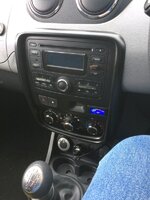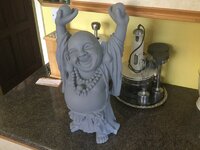Laka was mentioning that he had been doing some stuff around his house and I have over the last year done a few things too. For example, I did a bit of soldering and fixed a Kenwood food mixer for £10 (for the parts) but saved about £200 in not getting a new mixer. Our shower broke recently, replacement cost £200. The parts were available but by the time I worked out what was actually faulty it was getting close to the price of a new shower unit. A plumber would have been £100 (at least) plus new shower. The shower was a straight swap and just needed two screwdrivers and two spanners.
So that is about £300 saved. For about 2 hours effort.
So how do you get the handyman achievement and the impressed look from your partner/wife/husband/ significant other/dog/cat?
Practice!
My main advice would be tackle so small things first that don’t cost a fortune to repair if you do screw up. For example, when there was a big cloud of smoke from the Kenwood it was obviously and electrical fault. I just searched for the problem and discovered it was a know problem on older machines. Ours was at least 45 years old. The usual problem was a transistor thingy blowing that also takes a couple of capacitors away with it. The parts kit has everything you need apart from a soldering iron and solder.
I am no soldering god but even if you have never held a soldering iron before you could do this. Even if you ended up with big solder blobs it will work. Just follow the instructions.
The main steps to handyman are:
I am lucky in having a reasonable selection of tools. For somethings you may have to buy a special tool and you need to factor that in to the cost savings and if you are likely to use it again. If you do buy tools it is worth buying decent quality as they will last a long time especially things like pliers, hammers, clamps etc.
Hope this helps anyone thinking of trying something. The internet and YouTube are great resources to study before you start a project or repair.
Like cooking, brewing your own beer, there is a satisfaction in know I repaired that and it is still working or doing the job it is supposed to.
And check you spelt the title correctly before hitting post.
So that is about £300 saved. For about 2 hours effort.
So how do you get the handyman achievement and the impressed look from your partner/wife/husband/ significant other/dog/cat?
Practice!
My main advice would be tackle so small things first that don’t cost a fortune to repair if you do screw up. For example, when there was a big cloud of smoke from the Kenwood it was obviously and electrical fault. I just searched for the problem and discovered it was a know problem on older machines. Ours was at least 45 years old. The usual problem was a transistor thingy blowing that also takes a couple of capacitors away with it. The parts kit has everything you need apart from a soldering iron and solder.
I am no soldering god but even if you have never held a soldering iron before you could do this. Even if you ended up with big solder blobs it will work. Just follow the instructions.
The main steps to handyman are:
- Research the problem
- Make sure it is worthwhile doing yourself. Is the cost saving enough to make it worthwhile. If you just want to have a go that is a good reason but balance that withe the cost of repair if you screw something up.
- Check what you are planning on doing
- Get the wife etc. to also have a look too. They can ask those “silly” questions that you have not thought of.
- Check again
- Take your time doing it. There isn’t a rush to get something done, if there is then maybe you are not the person to do it.
- Safety: check the power/water/etc is off and double check.
- Do the job, check everything BEFORE you turn on power/water.
- Before standing back check that it is working as it should be before reassembling it completely.
I am lucky in having a reasonable selection of tools. For somethings you may have to buy a special tool and you need to factor that in to the cost savings and if you are likely to use it again. If you do buy tools it is worth buying decent quality as they will last a long time especially things like pliers, hammers, clamps etc.
Hope this helps anyone thinking of trying something. The internet and YouTube are great resources to study before you start a project or repair.
Like cooking, brewing your own beer, there is a satisfaction in know I repaired that and it is still working or doing the job it is supposed to.
And check you spelt the title correctly before hitting post.




